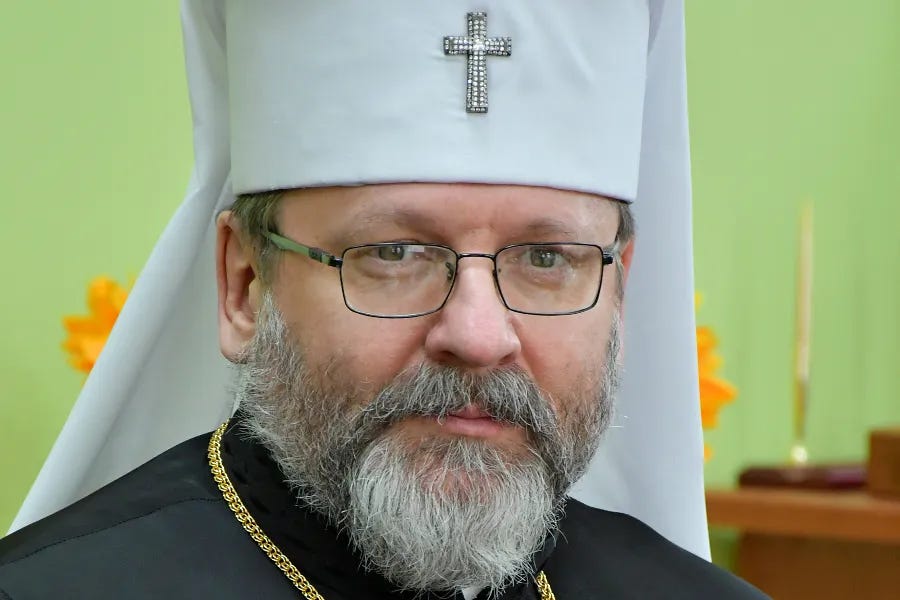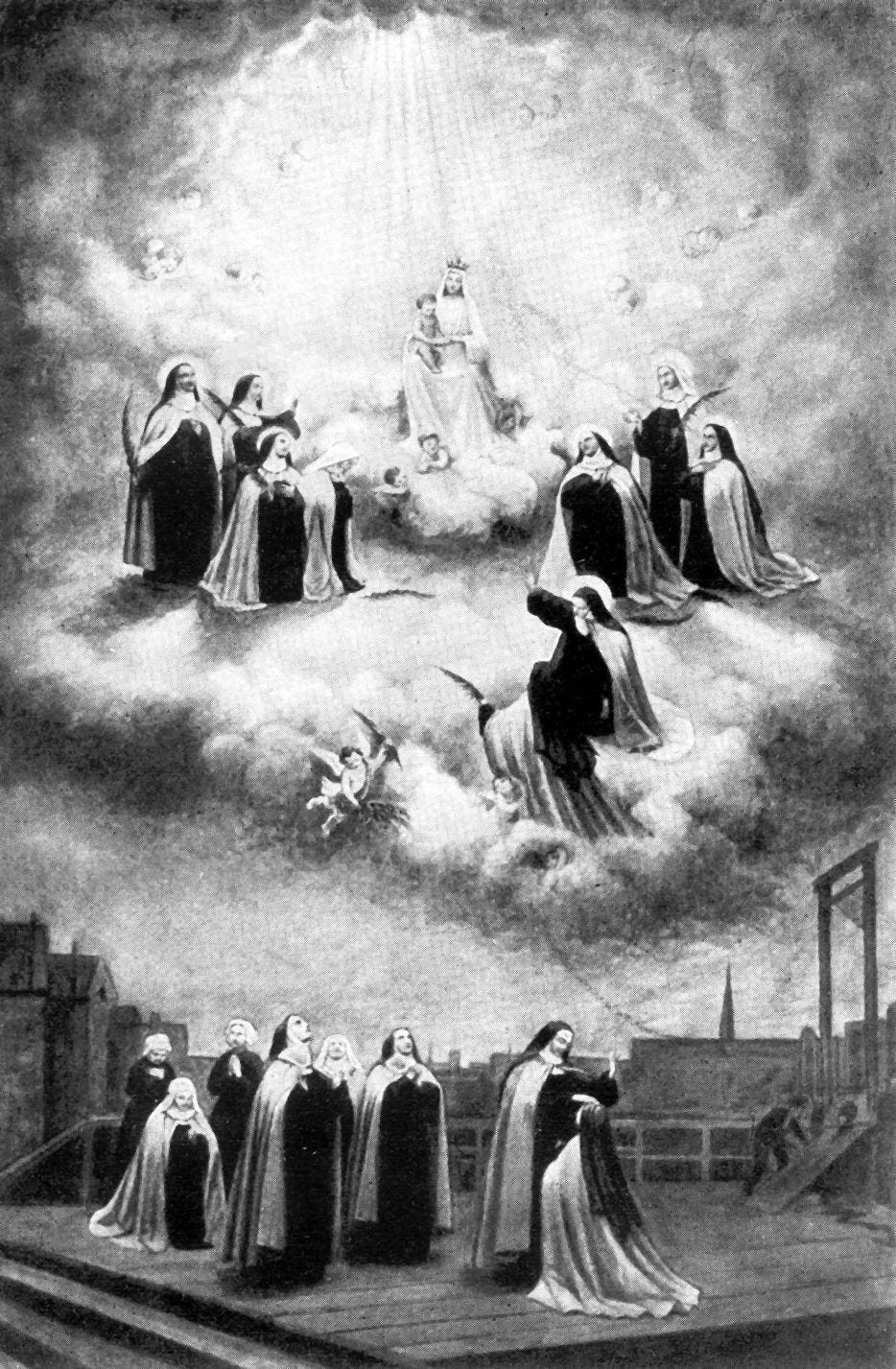Happy Friday friends,
Pope Francis is in Hungary and having a lovely time, I am sure. But first things first, since a lot of you have been asking — no, we did not make it to Medieval Times last week. We couldn’t find a babysitter. We’re going tonight though and, apparently, we’re just taking the 18-month-old.
I’m sure it’s fine.
Since I haven’t been to Medieval Times since I was a kid, it’d be premature to deliver a proper review of the experience. But I do want to double down on my assertion last week that MT represents great American culture.
To be clear, as a representation of medieval anything, it is, I am sure, nonsense — barely more coherent than the other great bit of Americana, the “Renaissance Faire,” presumably named by someone who wasn’t really clear on what or when the Renaissance was, and not even especially familiar with fairs.
But both Ye Olde Carnival and Medieval Times are highly entertaining. Guys jousting on horseback, meat on the bone, a bit of dress up for the family, what’s not to like?
Are they silly? Of course. But the reason it doesn’t all collapse under the weight of a thousand anachronisms is that it is an essentially unserious, and unself-consciously joyful enterprise.
I love MT in the same way I have come to love St. Patrick’s Day, understanding it as a fundamentally American thing. It’s loosely informed by a lurid pastiche of another time in another place, sure, but it only really works if you take it on its own terms. And those terms are pretty simple — it’s just for fun, ok?
Having lived most of my life on the other side of the Atlantic, I’m more than familiar with the critique of American culture as shallow, derivative, and gauche.
But the reverse of that coin is that Americana breathes unburdened by the kind of obsessive “authenticity” which is pure death for simple pleasures.
Consider the humorless scolds of Belgium and France, who conspired this week to destroy thousands of cans of Miller High Life at the border because the labels ironically proclaimed it to be the “Champagne of beers,” and thus posed a threat to the protected image of regional sparkling wine.
No one in Europe was in any danger of mistaking a can of High Life for beer, let alone Champagne, but the Europeans are never ones to let a good time get in the way of taking themselves too seriously.
Is “Chicago style” an infamia against pizza? Sure. But an Eduardo’s deep dish spinach pie is objectively a work of monstrous beauty and no one in old Napoli has the moral freedom to even try one, let alone to create such a thing.
Does Medieval Times look like a half-remembered fever dream of the age of chivalry? Of course. But that’s why it’s fun.
If you tried to do something like that in the Home Counties, you’d have a string of pretentious killjoys lining up to denounce it as vulgar and not “proper history” because no one greets you at the door by tipping a bucket of manure over your head and infecting you with plague. And there’d be a litany of po-faced op-eds about how, akshually, the middle ages were rife with socio-economic injustice and nothing to make a game of.
If America has one big cultural advantage, it is our freedom to just enjoy things for their own sake, and not have to take it, or ourselves too seriously. We should celebrate that, not blush for it.
The News
Pope Francis landed this morning in Hungary for a three-day Apostolic journey during which he will meet with civil and ecclesiastical leaders, with disabled children, with the poor, and, of course, with local Jesuits.
As you know, we don’t tend to cover events like papal trips unless and until we have something of value to add that you can’t or won’t be able to read somewhere else. So, for the moment, we’ve got no special take on Francis’ arrival, and I’m sure he’ll have a lovely stay.
Instead, we’ve prepared something different for you.
—
Away from his trial in Vatican City, Raffaele Mincione, occasional Pillar reader and the businessman behind the Vatican’s London property deal, has been having his day in court, several times over.
In addition to his criminal trial alongside nine other defendants in the Vatican, Mincione is suing the Holy See in UK court, asking the judge to rule he acted in good faith in all their dealings, and suing an Italian newspaper publisher over its coverage of him.
I have some sympathy for that claim, up to a point. But rather less for the argument the Vatican’s lawyer made last month that Cardinal Parolin was merely a “peripheral” figure in the whole business.
—
In the beginning, it seemed that Cardinal Jean-Claude Hollerich didn’t have a bad word to say about Germany’s “synodal way.” But now the relator general of the global synod on synodality seems to be one of the Germans’ more strident critics.
So, has Hollerich’s view of the synodal way evolved? Did the Germans’ cross some invisible line for the cardinal? Or is it possible Hollerich’s own rising star in Rome has been the reason for a change in tune?
—
It’s been exactly two years since The Pillar first reported that Bishop Rick Stika of Knoxville was facing the prospect of a Vatican investigation over allegations that he significantly mismanaged a sexual abuse case in the diocese.
Since then, he’s been inspected by three bishops delegated by the Vatican, and seen I-can’t-count-how-many letters from his own clergy written to the nuncio asking, pleading in some cases, for help.
This story has evolved over the years from straightforward questions about good governance to something of a wild ride. From the bishop’s own public statements, to the multiple Vatican-ordered investigations, to the total lack of follow through from Rome, the Knoxville story is the weirdest thing in American Catholicism.
And, whatever the Vatican might be hoping, neither Bishop Stika or his saga are going to just disappear.
Get up to speed here, on the bishop’s miracle, and the state of the investigation.
—
The number of Catholics in South Korea increased slightly in 2022, while the country’s overall population declined.
Luke Coppen reported the story this week, and you should give it a read.
—
The permanent secretary of the Synod of Bishops announced this week that Pope Francis will be including some 70 lay members from around the world in the synodal session in Rome this October.
It’s not the first time a lay person has been given a full voting role in the synod, of course, but it is the first time ladies have been asked to attend as full ordinary members, and that is kind of a big deal.
Whatever else it may or may not be, Pope Francis and the synodal staff have been clear that this synod on synodality is not a parliament that will meet in Rome, and that the lay attendees are not “representatives” of any “demos” — they are specially invited guests to a consultative process.
That’s well and good, and in accord with what the Church actually says a synod is. But it is, I am willing to bet, not how some of those invitees will present themselves, or how they will be treated by those bishops who positively want to see a synodal parliament, and see Church teaching decided by vote.
Before the synod meets in October, there is, I think, going to be an almighty war of spin and hype to set the agenda and establish who has the moral authority to talk about what, regardless of what Pope Francis has said the synod is for.
The Institute of Catholic Culture is now enrolling new students in our upcoming free, online course: Sacred Liturgy: History & Principles of Christian Worship. Join us for a deep dive into the rich symbolism and meaning of the Mass, the Sacraments, sacrifice and worship, the liturgical calendar, and more!
Synodal signal interference
Permit me, for a moment, to be annoyed about something.
One thing I find frustrating about news events like the synod on synodality is the amount of just bad reporting that goes on around and about it.
When the permanent secretariat announced Pope Francis’ decision to include 70 new lay members for the October session of the synod of bishops, almost every report I could find on the story contained some obvious error of fact, misuse of basic terms, or outright misrepresentation of the context.
I lost track of the number of times I saw it called “the first time” lay people would vote in a session of the synod of bishops — it won’t be. But to understand that, you need to know what a lay person is, what a cleric is, and how members of religious orders can be one or the other.
I saw major secular outlets report that the synod of bishops sets “Church policy” on a range of issues, which it doesn’t, but you need to know what the synod really does in order to know that.
I even saw a fairly well-known Catholic publication claim the new synodal assembly members were being given a “deliberative vote”, which of course they are not, but you have to understand the difference between a deliberative body and a consultative one to realize that’s kind of an important distinction to make.
Now, I appreciate that not all of these distinctions may be obvious to everyone. I would even expect that a few of you might think, at first glance, that I am splitting hairs here.
And that’s totally fine.
It isn’t your job, as the reader of a news story, to have these finer nuances at your fingertips, or to be able to intuit why they are important. That is supposed to be the job of the reporter.
They are supposed to, as a baseline of professional competence, have a grip of the basic facts of the thing they are reporting and know, understand, and be able to use technical terms correctly. And the reporting is supposed to communicate all of this to you, the reader, so that you can walk away from their report with an accurate understanding of what is happening.
But that’s simply not what you get from a lot — dare I say most — journalism on major Catholic events like the synod. And that’s just not good enough.
The synod on synodality is a big deal. A lot of aspects of it are controversial. There are, for sure, going to be bishops and cardinals who turn up in Rome this October to push an agenda which isn’t just outside the Church’s teachings but outside the bounds of what the synod’s own organizers have explicitly said it is there to discuss.
When that happens, a general understanding of what the synod can and cannot do, and was and was not convened to discuss, is going to be a big part of how that push is received and of what happens next.
The kind of casual misreporting of basic facts I saw this week might be easier to write (and better for clicks) but it’s not a service to truth. And, for Catholic media, while it might be to the advantage of one or other agenda, it is not a service to the synod itself or to the Church.
More to the point, it’s just bad journalism, all around.
For me, it insults what we claim to do as a profession. It also insults your intelligence, and I happen to know you’re smarter than that.
You deserve better, and you know that. And you shouldn’t expect or settle for less, including (and especially) from us. So don’t.
Political supastar
Spare a thought and a prayer this week, if you can, for Prakazrel Michel.
Pras, as he’s better known, was the “other one” in The Fugees, the forgotten member of that short lived phenom of a three-piece.
He was the only one who didn’t release several successful solo albums. He didn’t have a breakout role in “Sister Act 2: Back in the Habit”. He didn’t run for president of Haiti, and he didn’t (allegedly) use a disaster relief charity to fund a lavish personal lifestyle for himself and his entourage.
Pras did, however, release an absolute banger of a single in 1998 with Ghetto Supastar.
That song had everything: guest vocals from ODB of the WuTang Clan and Mýa (the only woman I would leave Gwen Stefani for), co-writer credits from all three BeeGees (the freakin’ BeeGees man!), and a music video starring Warren Beatty, Oliver Platt, and a pre-stardom Halle Berry.
It turned out to be Pras’ only hit, but it was the song of the year, easily, and better than anything Wyclef or Lauryn ever put out for themselves.
Ironically, the lyrics and music video had a political campaign theme to them, with Pras boasting that while “Some got hopes and dreams/We got ways and means/The supreme dream team always up with the schemes” while dealing with “diplomatic legalese” and being “politic with ghetto senators on the D-low.”
I say ironically, because it was political campaigns that brought Pras back into the limelight this week, when he was convicted of a multi-million dollar international political conspiracy, which I absolutely did not see coming.
He was convicted Wednesday by a DC court on 10 charges of money laundering, witness tampering, and acting as an unregistered agent of a foreign government — that’s Pras, from The Fugees.
Apparently, Pras found a gig for himself with the now-fugitive Malaysian financier Low Taek Jho, who gave him $100 million, much of which he used for political contributions, funneled through straw man donors, to Barack Obama’s reelection campaign in 2012.
Pras claims he just got some bad legal advice and thought everything he was doing was on the up-and-up. More to the point, he told the jury, he didn’t believe he’d funneled the money for Low, but chose to pass it through others to make political contributions because he considered it his money to do with as he liked.
“I could have bought 12 elephants with it,” he said in court, though paying $8.3 million per elephant would also have been a bad idea, if you ask me.
But wait, there’s more. Pras also lobbied the Trump administration Justice Department to step on an investigation into Low’s alleged embezzlement of millions from 1MBD, the Malaysian sovereign wealth fund, and separately pressed the DoJ to extradite the Chinese dissident Guo Wengui on behalf of the Beijing government, who are now believed to be sheltering Low.
Leonardo DiCaprio and former AG Jeff Sessions were both called as witnesses in the case.
That’s PRAS. From THE FUGEES.
No date for sentencing has been set yet, and his lawyers have announced he will appeal, but he faces up to 20 years in jail.
He should’ve just bought the elephants, I guess. And got the Gibb brothers to write him another song.
See you next week,
Ed. Condon
Editor
The Pillar










